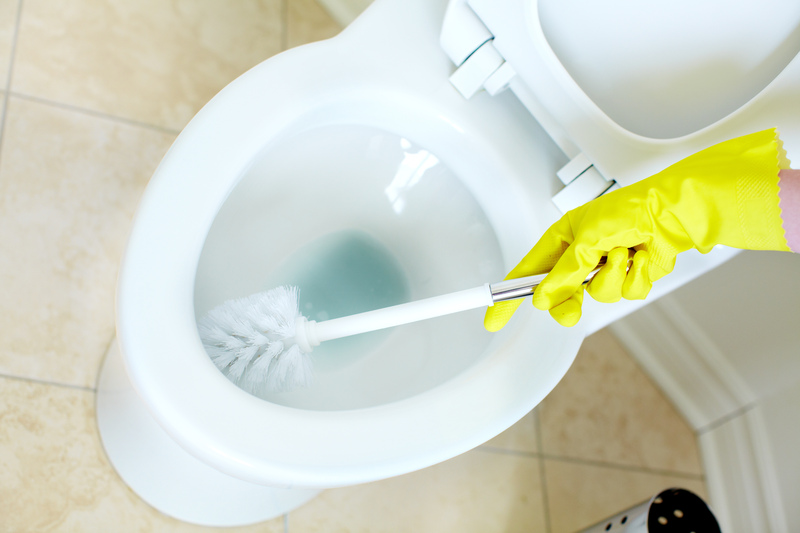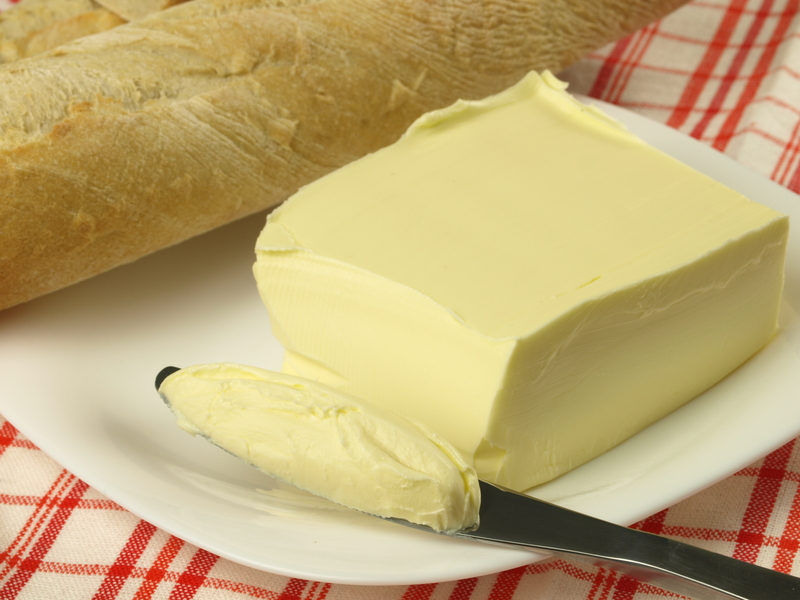Discover the ultimate guide to cleaning curtains effectively
Posted on 04/06/2025
Discover the Ultimate Guide to Cleaning Curtains Effectively
Are you tired of looking at dusty, dull curtains that once added charm to your home? You're not alone. Curtains play a pivotal role in setting the tone of any room -- but they also attract dust, odors, pet hair, and allergens. The good news? With the right approach, your window treatments can look as good as new. In this ultimate guide to cleaning curtains effectively, we'll cover every method, answer common questions, and share expert tips to preserve the beauty and lifespan of your curtains.
Table of Contents
- Why it's Important to Clean Curtains Regularly
- Identifying Your Curtain Type
- Preparations Before Cleaning
- Top Methods to Clean Curtains Effectively
- DIY Curtain Cleaning Tips
- How to Remove Tough Stains
- Drying and Ironing Curtains
- How Often Should You Clean Curtains?
- Curtain Maintenance Tips
- Frequently Asked Questions
- Conclusion: Reinvigorate Your Space
Why It's Important to Clean Curtains Regularly
Curtains are more than mere decorative elements; they act as filters for dust, pollen, and airborne pollutants. With time, these particles accumulate, affecting both aesthetics and indoor air quality. Here are strong reasons to prioritize curtain cleaning:
- Improved Air Quality: Clean curtains help reduce allergens, benefiting those with asthma or allergies.
- Longevity: Regular care extends the lifespan of your window coverings, saving you money.
- Better Appearance: Fresh curtains revive a room's decor and make it feel welcoming.
- Odor Removal: Fabrics can trap household odors; cleaning restores a neutral scent.
Identifying Your Curtain Type
Before cleaning, it's crucial to determine what material your curtains are made of as each requires a unique approach. Common curtain fabrics include:
- Cotton & Linen: Durable, often machine-washable.
- Polyester: Easy to care for and resistant to wrinkles.
- Velvet: Luxurious but delicate--usually needs professional cleaning.
- Sheer & Lace: Lightweight and fragile; hand-wash with care.
- Silk: Prone to damage; best cleaned by experts.
- Blackout Curtains: Feature an extra lining or coating, requiring special attention.
Tip: Always check the care label before starting the curtain cleaning process to avoid accidental damage!
Preparations Before Cleaning
A successful curtain-cleaning routine begins with proper preparation. Here are essential steps:
- Read the care instructions: These provide vital information regarding temperature, washing methods, and recommended detergents.
- Dust or vacuum first: Remove loose dirt and dust using a handheld vacuum or soft brush attachment to prevent muddying the fabric during washing.
- Remove hardware: Take down hooks, rings, or rods, which can cause snags or metal stains.
- Spot-test detergents: Apply a small amount of soap to a hidden area to check color fastness and material reaction.
Top Methods to Clean Curtains Effectively
No one-size-fits-all solution exists. Here are the best ways to wash curtains based on material and condition:
1. Machine Washing
Perfect for cotton, polyester, and some blends. Follow these steps:
- Remove all hardware and shake the curtains outdoors.
- Use a gentle cycle with cold or lukewarm water.
- Choose a mild detergent and avoid bleach unless specified.
- Wash curtains separately to reduce tangling and wrinkling.
- Consider adding a couple of towels to the load to cushion delicate fabrics.
2. Hand Washing
Essential for delicate fabrics like lace, sheers, and lined curtains.
- Fill a bathtub or large basin with cool water and gentle soap.
- Submerge the curtains and lightly swish them for a few minutes.
- Do not wring or twist--press excess water out by rolling them in a towel.
3. Steam Cleaning
A convenient, mess-free curtain cleaning method for heavy drapes; works best while they're hanging.
- Use a handheld garment steamer or upholstery steam cleaner.
- Move in vertical strokes from top to bottom.
- Keep the steamer head at least 6 inches from the fabric to prevent water damage.
- Allow for complete drying by opening windows or turning on a fan.
4. Dry Cleaning
Mandatory for velvet, interlined, or embellished curtains.
- If the care label says "dry clean only," don't risk home washing.
- Take them to a professional cleaner with expertise in curtain care.
- For convenience, select cleaning services that offer pick-up and drop-off.
5. Vacuuming & Brushing
Simple, regular curtain maintenance between deep cleans:
- Use a soft-bristled brush or your vacuum's upholstery attachment.
- Back the fabric with one hand to avoid stretching the material.
- Bonus: Great for removing pet hair, dust, and cobwebs!
DIY Curtain Cleaning Tips
Here are expert do-it-yourself curtain cleaning suggestions to achieve professional results at home:
- Odor Elimination: Sprinkle baking soda over the fabric and let it sit for 30 minutes before vacuuming.
- Wrinkle Reduction: Hang curtains back up slightly damp; gravity will help smooth out creases.
- Stain Removal: Use a solution of white vinegar and water for minor stains (test first).
- Sunshine Refresh: On a clear day, hang washed curtains outside--the sun will naturally brighten and deodorize them.
- Lining Care: When cleaning lined curtains, focus on the face fabric, as linings may shrink or deform if over-washed.
How to Remove Tough Stains from Curtains
Dealing with wine spills, ink marks, or stubborn grease? Follow these targeted strategies:
- Red Wine: Blot with a clean, absorbent towel, sprinkle with salt, and rinse with cold water. Wash as usual.
- Grease: Dab with cornstarch, let sit to absorb oil, then brush off and spot-clean using dish detergent.
- Ink: Use a cotton swab dipped in rubbing alcohol and gently blot--avoid rubbing or spreading.
- Mildew: Mix lemon juice and salt into a paste, apply to the spot, let stand, then rinse thoroughly.
- Coffee/Tea: Dab with a mixture of vinegar and water; launder promptly afterward.
Remember: The faster you treat stains, the better the results.
Drying and Ironing Curtains
After cleaning your curtains, drying and ironing are key to restoring their elegant drape.
- Air Drying: Hang curtains outside or over a shower rod. Avoid direct sunlight for colored fabrics to prevent fading.
- Tumble Drying: Only suitable for certain materials--use low heat and promptly remove to avoid wrinkles.
- Ironing: Iron on the recommended setting while slightly damp. For stubborn wrinkles, use a steam iron.
- Re-hang While Damp: Some fabrics look best if hung back while damp, letting gravity help smooth them out naturally.
How Often Should You Clean Curtains?
The frequency of curtain cleaning depends on your environment but as a general guide:
- Light Maintenance: Vacuum or brush every 2 weeks.
- Spot Cleaning: Address spills and stains immediately.
- Deep Cleaning: Every 3-6 months for most curtains; annually for heavy drapes or those in low-traffic rooms.
Special cases: Homes with smokers, pets, or people with allergies may require more frequent curtain cleaning.
Curtain Maintenance Tips for Long-Lasting Results
Maintain clean curtains and their dazzling appearance year-round with these practical tips:
- Avoid Overwashing: Too much cleaning can weaken fibers and fade colors.
- Regular Dusting: Keep windows and sills clean to minimize dirt transfer.
- Scent Boost: Add a drop of essential oil to rinse water or spray a fabric-safe refresher while rehanging.
- Protect from Sun: Use blinds or shades behind curtains to reduce UV exposure, minimizing fading.
- Check for Pests: Inspect for moths or insects, especially on rarely moved drapes.
Frequently Asked Questions: Cleaning Curtains Effectively
Can I machine wash all types of curtains?
No. Always check the care label. While cotton and polyester curtains are generally safe in the washer, velvet, silk, and blackout curtains often require handwashing or professional cleaning.
How do I clean blackout curtains?
Due to their lining, avoid machine washing. Instead, vacuum and spot-clean stains. If necessary, consult a professional cleaner familiar with blackout fabrics.
Is dry cleaning necessary for all curtains?
No, only for those marked "dry clean only" such as some silks, velvets, or interlined and delicate curtains.
Can I use bleach on curtains?
Use bleach sparingly and only if recommended on the care label, usually for white cotton. Bleach may damage colored or delicate fabrics.
What's the best way to freshen curtains between deep cleans?
Regular vacuuming, using fabric sprays, or a light steam refresh are excellent in-between options.
Conclusion: Reinvigorate Your Space with Clean Curtains
A fresh set of curtains can transform your living space, improving both comfort and aesthetics. By cleaning curtains effectively and sticking to a regular schedule, you extend their lifespan and maintain a healthier home environment. Remember: the right method depends on fabric type, so always read the care instructions first. With these expert tips and straightforward techniques, your window treatments can once again become a stunning focal point in your home.
Now that you've discovered the ultimate guide to curtain cleaning, why not start today and let your windows shine anew?







